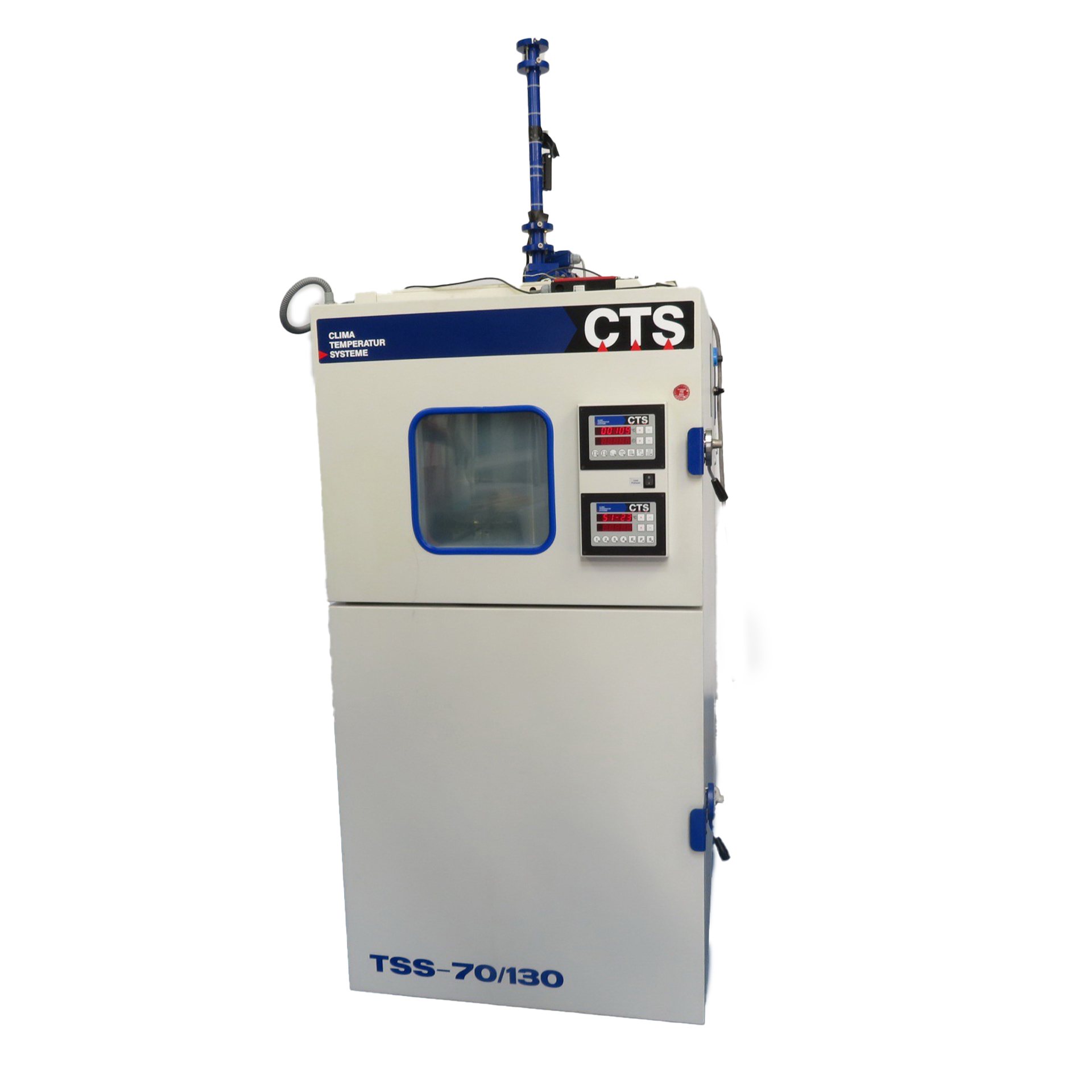
The thermal shock test (temperature shock test) is a testing procedure in which a material, component, or device is subjected to rapidly changing temperature environments to check its reliability and durability.
What is it used for?
A hő sokk tesztet leggyakrabban az alábbi területeken alkalmazzák:
- Electronic Components (e.g., printed circuit boards, chips, solder joints)
- Automotive Industry (engine components, dashboard elements)
- Aerospace and Space Industry (aircraft and spacecraft components)
- Medical Devices
- Testing of Plastics, Metals, and Composite Materials
Hogyan zajlik a teszt?
During the test, the sample or device is placed in two or more chambers with different temperatures and quickly moved from one to the other. The temperature change can be, for example:
- -40°C → +125°C within a few seconds or minutes
- In extreme cases, up to -100°C → +200°C
This temperature fluctuation causes stress in the material or structure, which can lead to cracks, delamination, or other types of damage.
What equipment is used?
- Thermal Shock Chambers (with Temperature Switch Compartments)
- Liquid Medium Systems (e.g., liquid nitrogen and hot oil)
- Air-Cooled and Heating Systems
Important Standards for Thermal Shock Testing
The testing procedures are defined by various industry standards. These ensure that the tests are reliable and comparable.
MIL-STD-883 – Testing of Military and Aerospace Electronic Components (USA)
IEC 60068-2-14 – Environmental Testing for Electronic Devices
JEDEC JESD22-A104 – Thermal Shock Testing for Semiconductor Devices
ISO 16750-4 – Reliability Testing for Automotive Electronic Components
ASTM D1654 – Corrosion Resistance Testing for Coated and Painted Surfaces
If your company tests automotive components, then ISO 16750-4 and IEC 60068-2-14 might be the most important for you!
Thermal Shock Testing Equipment
The equipment used for the test may apply various technologies:
Two-zone or Three-zone Thermal Shock Chambers
Air Chamber Systems: The sample moves between a cold and a hot compartment using an automatic lift or sliding mechanism.
Liquid Systems: The sample under test is immersed in two different temperature liquids (e.g., liquid nitrogen and hot oil).
Direct Cooling Systems
These systems use liquid nitrogen or CO₂ for rapid temperature changes.
Hybrid Systems
These combine air chamber and liquid technologies to provide an even more extreme test environment.
Typical Temperature Ranges and Cycles
The test requirements are determined by the material or component being tested, but generally:
Temperature Range: Between -65°C and +200°C
Temperature Change Time: 10-30 seconds
Number of Cycles: 100–1000 cycles (or more, depending on the requirements)
The goal is to examine the effects of sudden temperature fluctuations, such as:
- Material Fatigue
- Cracks due to Thermal Expansion
- Solder and Coating Delamination
- Brittleness of Plastic Components
Phone Contact
+36 70 408 0134

